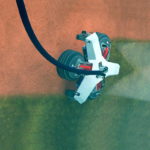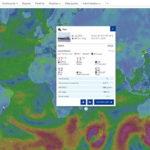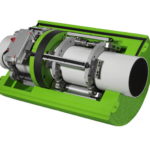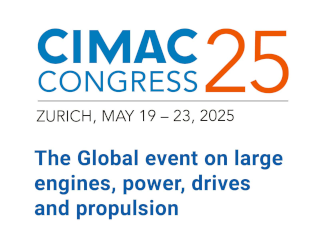While ISO 19030 still causes compliance discussions, hardware and software performance monitoring solutions have improved and underwater robotic cleaning and inspection has matured from esoteric research to industry services, writes HullPic organizer Volker Bertram
At first glance, the topic of hull management may sound as interesting as watching paint dry. So why do ship[ds_preview] operators from far and near flock together in a manor house in the middle of nowhere in northern England for this topic? In short, the answer is »money«. After slow steaming, hull management is the second-largest fuel saving lever. But unlike reducing speed, antifouling and performance monitoring are complex topics where rapid progress makes yesterday’s »proven« recipes questionable and yesterday’s key players tomorrow’s has-beens. The key trends for HullPIC 2018 can be summarized as follows:
• Performance monitoring matures, in technical details and in business practice. Both hardware and software enjoy continuous improvement.
• The love-hate relationship with ISO 19030 continues. My gut feeling is that many systems on the market would not pass a formal audit despite claims to be compliant with the standard.
• Underwater robotic cleaning and inspection has matured from esoteric research to industry services. The first commercial applications may indicate a disruptor of traditional business procedures.
Self-proclaimed compliance causing unease
A guiding principle for the ISO 19030 working group when deciding on what should be included in the default method and what should be included as alternatives was »state-of-the-art but mature and generally available«. With ISO 19030 moving up to its first regular revision, we need to reassess what is »state-of-the-art but mature and generally available«, especially in view of the digital revolution currently rolling over shipping. Some may argue that ISO 19030 is already past its expiration date. However, Geir Axel Oftedahl (Jotun) argues in his kick-off lecture »Positioning and Setting the Course for ISO 19030« that the rapid technological change makes the standard more relevant than ever.
But so far, nobody has established who will audit and certify compliance. Self-proclaimed compliance rules cause some unease in the ISO 19030 community. Everybody claims to be compliant, although approaches differ widely and most vendors claim to be »better than« ISO 19030. While there is wide consensus that incompatible individualistic approaches are not what operators need, vendors are reluctant to change their products and so, no doubt, we will hear silver-tongued arguments how this or that variation should be written into the standard’s next revision. However, mostly, the conference will focus on changes in technology and the wisdom that comes from hindsight, sharing the experience gathered over the past three years.
Getting better data is half the equation
It all starts with accurate data acquisition. If sensors or crews give wrong or no data, then performance monitoring is doomed from the beginning. From the very beginning of the ISO 19030 development, there have been two contentious issues: (1) Can propeller and hull performance be separated? (2) Do we need high-frequency data sampling?
The scale seems to tip slowly in favor of separating hull and propeller performance, at least in a rough qualitative way. Nothing more can realistically be expected, as hull fouling will change the inflow to the propeller and thus also propeller performance. Part of the cautious optimism is based on progress in thrust measurements, as presented by Erik Van Ballegooijen. But even if thrust can be measured, can it be measured accurately enough for performance monitoring assessment? This will be discussed by Jan Wienke (DNV GL). And even if we measure thrust accurately enough, we would need propeller characteristics in behind-ship condition at full scale at actual draft and speed – at least in an ideal world. Various correction schemes resort to using model-test data for some generic propeller without ship and some magic coefficients for design draft and speed – and hope for the best. The more you know, the more you doubt. It appears that we need to crack a few more nuts before ISO 19030 will include an official recommendation to separate hull and propeller performance.
Another long-running issue concerns high-frequency data sampling – do we need it or not? The default approach of ISO 19030 is based on it, putting those using low-frequency sampling (= noon-reports only) on the defensive. There is no question that more data reduces random errors and thus increases accuracy, but data frequency is only half of the »data acquisition« equation; the other is data quality. The real issue is: Can once-per-day data acquisition be accurate enough for performance monitoring if data quality is high, especially if combined with a good hydrodynamic model for the data processing? Or, from a ship operator perspective: Should I invest in sensor technology and sampling frequency, or crew training and real-time input checking? At HullPIC 2018, we will hear arguments from both factions.
Smart processing is the other half
Getting good input data is not enough. Only smart processing leads to good insight. This starts with filtering out data with high error or uncertainty. These simple and explicit filtering specifications of ISO 19030 unfortunately lead to too many data sets being filtered out unnecessarily. Daniel Schmode (DNV GL) and Ditte Gundermann (Hempel) propose more intelligent filters looking at the ratio between calm-water resistance and added resistance due to wind and waves. This allows inclusion of far more data sets, as e.g. wind from abeam has much less effect on the power requirements.
A traditional Achilles heel in performance monitoring is the correction for added resistance in waves. Contrary to researcher and vendor lore, there is no cheap and simple way to predict added resistance in waves. Even worse, the traditional estimates by »experienced crew« have been shown to be way off objectively measured wave heights. The pragmatic approach of ISO 19030 has been to filter above low sea states. There seems to be a silver lining on this particular horizon. Rune Gangeskar (Miros) describes radar-based wave and current capturing. This is an important milestone on the way to better correction methods for changing ambient conditions. With such detailed and objective wave information, advanced numerical methods can then predict added power requirements in these sea states. Ould El Moctar (University of Duisburg-Essen) will give an overview of these.
Finally, smarter data processing can also help with human factor issues. Anders Møller (Insatech) advocates for example intelligent data fusion, i.e. using data from different sensors or simulations, to cross-check manual input results. The idea is to identify implausible data logging immediately, fixing sensor failures or human error on the spot.
Underwater »lawn mowers«
In a special session, HullPIC 2018 covers the latest developments of robotic underwater inspection and cleaning. Alex Noordstrand (Fleet Cleaner) describes how remotely controlled robots remove fouling while the ship is loading and unloading. Since the first in-water trials in 2015, the service has been rolled out to all Dutch ports reflecting its increasing popularity with ship operators.
Knut Lyskett (Blueye Robotics) presents live streaming of underwater drone inspections. The Blueye Pioneer underwater drone can be controlled by the crew itself and sends video images in real-time allowing web-based telepresence for customers virtually without delay on the screen. Using e.g. smart-phones, ship owners can then monitor and guide the inspection without having to leave their location.
»If you build it, they will come«
When I was asked to give a sneak preview of the 3rd Hull Performance and Insight Conference (HullPIC), 12-14 March 2018, the first thing that came to my mind was the quote from the movie »Field of Dreams«: If you build it, they will come. In 2015, Geir Axel Oftedahl (Jotun), then secretary and motor of the ISO 19030 working group, came to me with the idea of me (!) organizing a conference that would be a continuation of the working group, accompanying the soon-to-be-published standard in its fledgling years. I declined categorically. Half an hour later, thanks to his persuasive powers, we had hammered out the concept of HullPIC. He had the vision, »we« built it and »they« came. Its reputation spread, and by now the conference has established itself as the place to be if performance monitoring is your business. With expected 100 participants, the 3rd HullPIC will set a new record.
HullPIC 2018 enjoys unprecedented popularity in registrations so far. The flip side of this popularity is that not all interested stakeholders will be able to participate due to capacity limits. As co-organizer Geir Axel Oftedahl explains: »We want to preserve the special atmosphere of HullPIC, even if that means having to make some tough calls.« As a consolation, the proceedings will be freely downloadable from www.hullpic.info after the conference.
Volker Bertram


















